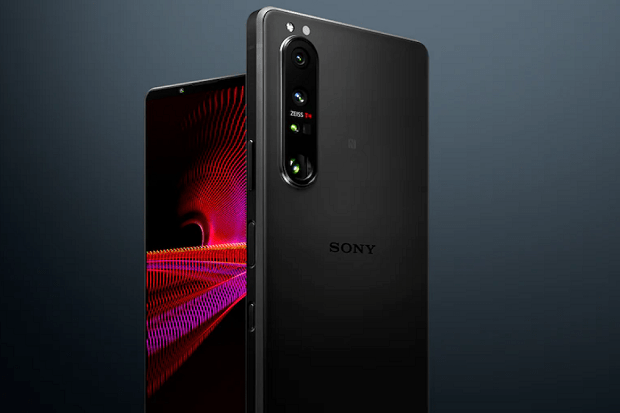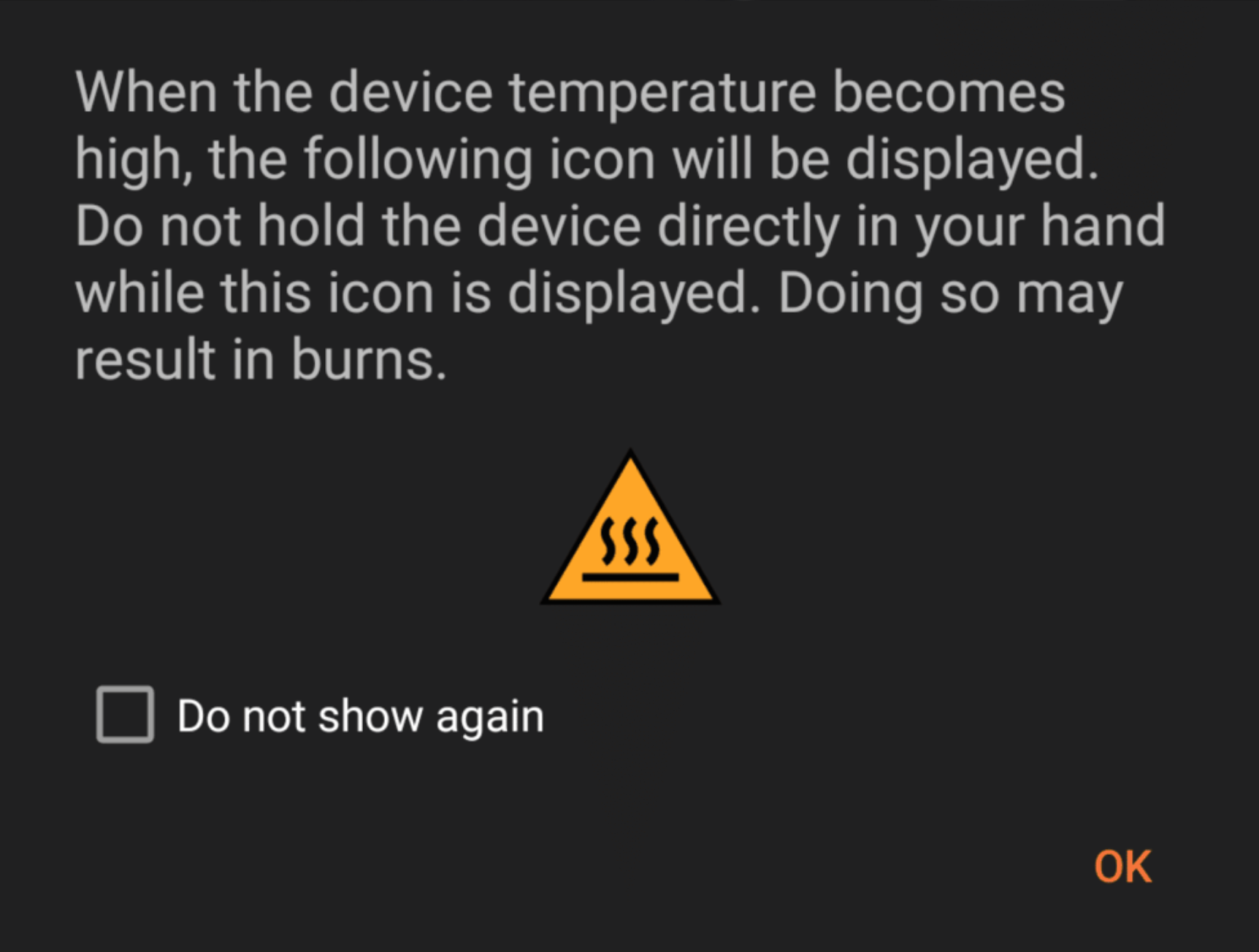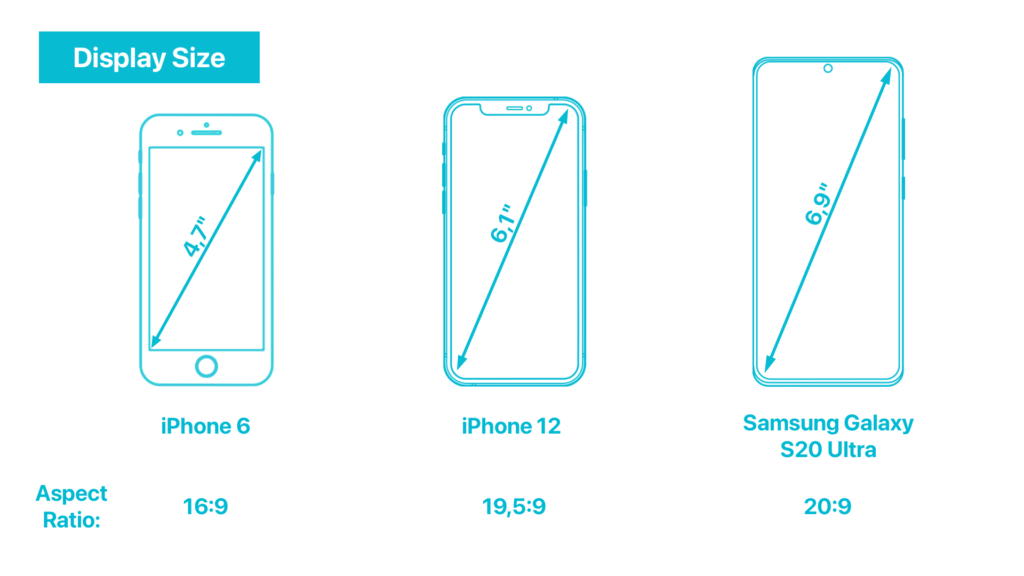The Sony Xperia 1 IV - A Month Later
13 min read
January 4, 2023

Did you even know Sony made smartphones? With a tiny market share and almost no advertising, I can't blame you - Sony smartphones represent a niche in the industry. And I'm in that sub-1% who use them.
1 month ago, I bought the Sony Xperia 1 IV ("one mark four") to replace my 3 year old OnePlus 7T. After a month of use, involving school, a holiday, and general usage, I have lots to say. Since plenty of really good reviews already exist, I'll be focussing on my experience and opinions, instead of just specs and tests.
Design
I went for the black colourway. It's sleek and minimal - precisely what I like. Some may find it boring and uninspiring, but it comes down to taste. The camera bump is as small as possible in every dimension, a refreshing change from the iPhones and Samsungs. The Gorilla Glass Victus back is matte black, and the aluminium rails follow this trend - and I've found this to be amazing. The fact that both the rails and back panel look and feel the same is magical - you'll have to see it in person to understand it. It also boasts an angular, modern design.
The back has limited text - both on the camera module and the glass. I really hate the text on many other smartphones. There's just literally no need for it, but it looks so much worse. The toolless sim card tray is a feat of engineering, though the fingerprint scanner needs to be cleaned several times a day to work (which is extremely annoying) - it's rapid when it does.
Overall, it's a very well built premium device with my favourite design of 2022, but that comes down to preference.
Software
It's pretty much stock Android. Sony's skin is lightweight and fast, blending seamlessly into Google's OS whilst providing a fair amount of additional features. The most notable are a suite of audio settings and display calibration, but others include battery management, and productivity features.
Now, these productivity features are pretty cool. There's something called "side-sense", which is basically a dock with a few more shortcuts. I personally don't use it, since I don't like docks - the fact that I have just 5 apps on my entire home screen probably tells you that!
They also have a very well polished pop-up window feature, and a slightly laggy but functional splitscreen mode. None of which I really use, but I suspect that would change as I go back to school.

Checking the Formula E 2023 calendar with my own calendar up whilst watching a YouTube video reviewing the last season. Productivity can get extreme on smartphones these days...
Oh and they have a very nice "on" animation - the screen fades and the wallpaper comes alive. Plugging it in also provides a nice screen ripple effect. I can't speak for the Sony launcher though - I instantly got rid of it in place for my Nova one :D They also have a comprehensive game assistant that looked great, but I haven't used it enough to comment further.
Promised just 2 years of software and security updates, Sony failed us here. As this phone was technically a mid-2022 phone, I'll get Android 14 and no more - but I'll have this phone at the time when Android 16 is released. However, due to the lack of bloat (Sony asks you what bloat you want during set up, none for me!), I'm not too concerned about the security issues. And considering how, when I set up my phone, I had Android 13 updates ready to fire, I suspect Sony will be prompt with their security patches for the next 18 months.
AND, the phone is very easy to root and Sony even provides keys to help you! I plan to root my phone for the final year anyway, so not receiving updates isn't much of a bummer. After all, my OnePlus only got 1 year of updates, stretched out over 3 years!!! Don't buy OnePlus...
Sony's skin perfectly compliments Android - despite the short software life cycle and the odd buggy feature, it strikes the balance between providing enough features without being bloaty.
Performance
Like any modern flagship, the Sony handles daily tasks with incredible speed. The combination of fast storage, software, 12GB RAM, and the Snapdragon 8 Gen 1 combine to form a flawless experience. I'm not a mobile gamer, but I did try some out alongside other demanding tasks and the phone powers through it... Until it doesn't.
Lots of reports showed constant thermal issues and throttling - a whole rabbit hole which I won't dive into now. But the bulk of the issues seem to have been fixed through software updates, because just once did I get a thermal warning and performance decreases accompanying it. But only after having streamed YouTube on maximum brightness in direct sunlight for a while, and 5 minutes of photography. This is acceptable, and has never happened otherwise during daily use, so no complaints here!
Though Sony does give some hilarious warnings like "don't hold the phone ... You could burn yourself". Geez, thanks for that, Sony...

This pops up whenever you open one of the three camera apps
When the phone gets warm, the entire phone does. This is great for longevity because the lack of concentrated heat is less likely to damage components, but it sucks for comfort - though the phone never gets "too" warm, my hands can begin to get sweaty just by holding it for a while. The 8G1 is fabricated by Samsung, and not TSMC, which is why all 8G1 phones have thermal issues - quite disappointing but difficult to avoid. Even Google's Tensors (also using Samsung fabs) suffer from a similar issue.
Either way, the thermals and throttling are not as bad as reviewers seem to make it out to be. The RAM is perfect - I don't constantly see things dip from memory, and 12GB should be enough for the next 3 years!
Overall, the user experience from a performance perspective is terrific, but the longevity of the 8G1 and the thermals are questions that can only be answered with time...
Display
Right, this is THE highlight of the phone for me. The display is what I rank to be the most important part of a smartphone - it's what you see every second you use it, it's how you interact with the device. And as someone who watches over 5 hours of YouTube video every day, it's a pretty key part of my life!
Being a display geek, I have different values than most people in smartphones so what I'm about to say is not general advice, and not something almost anyone would agree with - so bear that in mind.
I love the high refresh rate - 60Hz just feels straight up laggy and I notice it very clearly on any non-high refresh rate smartphone. It's not something I can just "get used to" after having used faster screens. My previous OP 7T had a 90Hz panel, so this 30Hz may not seem like much of an upgrade, but it was night and day. I don't necessarily notice the "slowness" of a 90Hz panel, but I recognise the "speed" of a 120hz one and it makes the phone significantly more fluid to use. This was why I refused to buy myself a 90Hz phone such as the Google Pixel 7!
The 10 bit screen (well, more like 8 + 2 bit FRC - but the effect is the same, it's quite interesting so research more!) is also clearly superior to an 8 bit. Whilst only a few UI elements really have enough shades to make use it (Sony's default wallpapers being one), it's more obvious in photos and videos where subtle (dark) gradients in the real world are common. So, when enabled alongside better colour calibration, YouTube videos look stunning.
Resolution is always a key marketing point, sometimes 'retina' is used to disguise low resolutions such as in Apples iPhone XR, and other times growing numbers like 4k and 8k are thrown around to entice consumers.
Let's first clear something up - it's a pretty technical point with lots of nuances, but when talking about displays, "resolution" refers to the pixel density - how many pixels are there per inch? Otherwise known as ppi. And the large numbers, like 4K, 1080p, and 1440p all refer to pixel count - how many pixels are there regardless of screen size?
This is important because context matters; a smartwatch may only have a pixel count of 240p, but because it's so small, the resolution would still be more than enough. But imagine a 240p laptop... You would barely be able to read text!
Anyway, so typical smartphone resolutions vary from 380ppi to 550ppi - around 420ppi is the minimum I'm comfortable with, but around 480-500ppi is my sweet-spot. And given the size of smartphones, you'd usually need a 1440p screen to achieve this but these are pretty rare compared to 1080p. The Sony has a ppi of 640! Of course, this is definitely way more than I want, but at least it passes my ideal threshold AND the high resolution display means that everything is extremely sharp. Not only is it just difficult to see individual pixels in daily use (which isn't the case up to 450ppi), it's literally impossible!
Despite the 4k screen being overkill, it still noticeably improves the user experience and therefore I'm quite happy with it. Not to mention, it's a technical marvel and a great flex!
Now, the 21:9 aspect ratio. The thin device means that it's quite easy to use one handed, and it means you can fit more vertical content on the screen - really useful when browsing, messaging, or scrolling through social media! The issue comes with watching videos - there's "letterboxing" on the side. I don't really mind this, as long as the video is large enough (which it is), since any phone on the market can't get away letterboxing free.

Common smartphone aspect ratios
Auto-brightness is pretty good for the most part, the screen gets plenty bright in sunlight (though I would prefer a little more), and Sony has an "extra dim" mode which lowers the display's minimum brightness to make it more than comfortable at using in a dark room at night - a really awesome feature that more phones need!
Finally, there's the issue of bezels - the phone has a sizeable (though not large) chin and forehead which is not as aesthetic as a phone could be. However, Sony has used these bezels to incorporate front-firing speakers, a notification LED, a large selfie camera, a proximity sensor, and a light sensor. They're also pretty easy to ignore and the lack of a notch, hole-punch, or "dynamic island" is super sweet. I forgot how much I missed an interruption-free screen.
The display is arguably the best on the market, fulfilling a range of criteria and breaking boundaries. Whilst it may be overkill, a good display is critical in my opinion.
Speakers
First off - I'm no audiophile but I sure do love watching YouTube, and can differentiate between a spectrum of good speakers. Oh and I listen to no music...
The Sony has two incredibly powerful front-firing speakers. They can go from effectively silent to very loud, with no audible distortion. The front firing speakers are great for a good stereo balance, and you are less likely to block one with your thumb! I dabbled in Tidal, and was mighty impressed with the quality, but in sake of not providing potentially incorrect analysis, I'll leave my review of the speakers there.
Although, Sony's 3D spatial sound features worked really nicely to make you feel like you're in a room with the presenter/singer.
The haptics are also incredible - the engine is super, super powerful yet "tight". It feels great, but can vibrate an entire desk and jump scare you because it's just that powerful. Happened to me far too many times this month...
Overall, the speaker system is top notch for a smartphone and leaves little, if any, to be desired. The loudness is ample, clarity good, and the haptic motor is a highlight.
Battery
You'd expect the huge 5,000 mAh battery to last a while, but it doesn't. It lasts longer than I'd need it to for sure, but the inefficient chip and the powerful display suck juice from it fast. Of course, the battery life is still great and using more than 60% a day is rare, and I never used more than 100% a day even on my holiday to Spain.
The razor-thin phone box was a sight to behold; but it had no case, no charger, no cable. So I bought the official 30W charger for the Xperia. Flagships don't seem to be adopting high charge rates, so whilst 50W would be ideal, 30W is still more than Samsung and Apple and it charges fast enough in a pinch.
The Sony has wireless and reverse wireless charging, but as cool as wireless charging is, it's not practical or efficient so I've never used it. A great premium-indicator though!
The Sony delivers great battery life with great battery management controls and analytics, combined with solid charging, so even if it doesn't meet the spec-sheet hype, it's still ample for most.
Cameras
I'll leave this short... Cos otherwise this will be a novel!
The consistency across the three rear cameras is insane, and the colour accuracy is bamboozling-ly good. But it doesn't produce photos that you'd love to look at and share - it produces photos that professionals would love to edit and play around with. The photos are still great, but lack strong dynamic range and saturation.
Autofocus is... Nuts. Utterly nuts. It's insanely fast, accurate, and reliable. Nothing else to say here.
The (3!) camera apps are fun to use, emulating Sony Alpha interfaces. The dedicated shutter button is not only handy with the half-press for focus, but also a pleasure to click.
The first of its kind optical zoom technology is extremely cool, but also not too useful with the current range of 3.5-5.2x zoom - it does pave the way for the future though, as LG just released their own 4-9x off-the-shelf component!
Selfie snaps are solid, and videos are very good
Whilst natural blur on the telephoto camera is good, "Bokeh Mode" is a little disappointing, with poor edge detection and the tendency to blow out the image. But in the right situations, it produces stunning results.
And that's the thing about this camera system - in the right situations it has capabilities beyond any other smartphone. In the hands of a pro, these cameras are award winning. But in the hands of myself, I can only try to learn the nuances of the system to take the best photos I can, and spend 30 seconds editing them until I'm happy. My week in Spain gave me the opportunity to master just this; I can now take pretty solid photos with the phone every time.

Ultrawide, edited. I had to bring out some dynamic range through editing.

Standard, edited. A really tough backlit situation in a dark environment - other than some noise, the Sony handled it well.

Telephoto, edited. The natural bokeh here is quite nice.
The default camera app does little post-processing, a GCam mod would suffice for the average person - but this is not what people should need to do just to get nice photos...
The camera system is ground breaking and powerful, but lacks even a hint of "point and shoot" finesse, causing it to score last in MKBHD's blind camera test. Yet, it's a joy to use and super snappy.
Final Thoughts
For the asking price of £1300, the phone is a mixed bag. It lacks some basic things that all other flagships have - but it's not trying to be them, it's trying to accompany them. It's for content consumers and creators, creative folk who take photos and videos and vlogs. But it's also for me, a tech enthusiast who can appreciate the little things, who loves watching YouTube, and who desires a fast device.
Sony has always been a pioneer in consumer electronics, but they're in a unique position in today's smartphone market. Their engineers make unpopular decisions plus their lack of a strong marketing strategy and aggressive pricing put the phone behind the crowds. Yet, it's a gem you don't see, bringing us innovation and option, forging a passionate community, and being an underdog among the iPhones, Samsungs, and Pixels.
When you consider the base storage being 256GB, and expandable by up to 1TB through a microSD card slot, combined with the 12GB ram, this phone begins to look more reasonably priced. And when you account for the constant sales on Sony's own website, finding this phone for well under £1100 is simple - at which point, I'd say it's worth it. The specs are unmatched. But it's not for everyone.
So when I found my phone with a £690 price-tag, it was a steal. The Sony Xperia 1 IV may not be a flashy phone, and it doesn't come without its issues, but an incredible device with so many damn things going for it - I had to take it. And I don't regret it one bit...
PS: I could talk about this phone for hours on end, but I'll leave it there and I hope you enjoyed reading!
copied!
failed to copy!